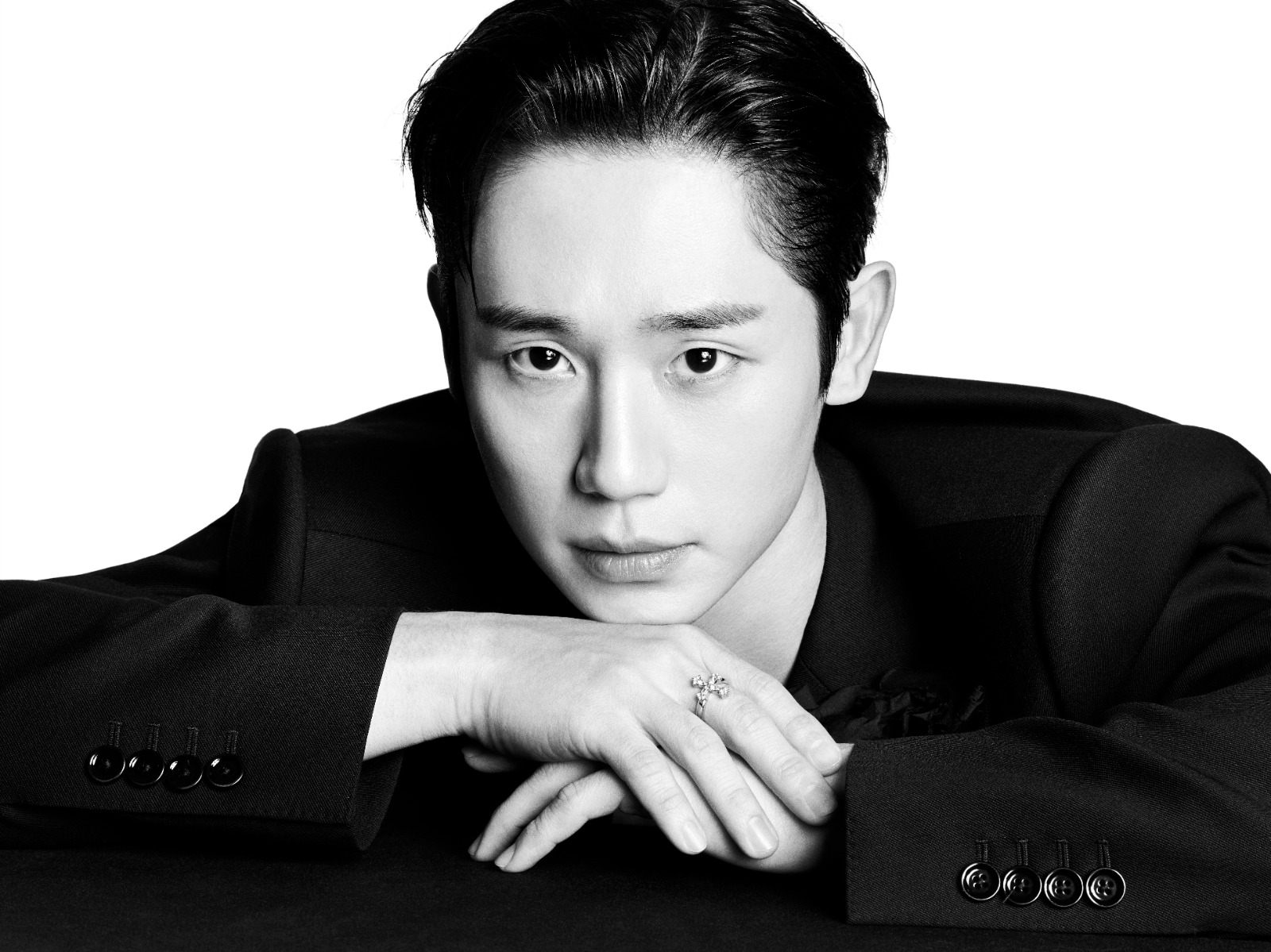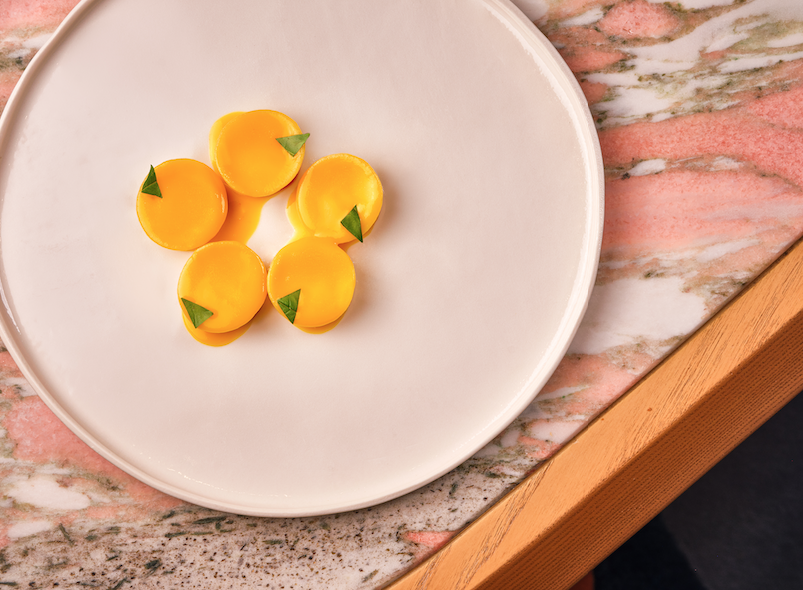Olivier Krug on champagne craftsmanship and family
May 14, 2024
In town to present the new Krug Les Créations de 2011, sixth-generation director Olivier Krug talks to Stephenie Gee about family, craftsmanship and overcoming one of the most difficult growing seasons in history

Usually, when people release a new Champagne, you only taste the new Champagne. But I wanted to do it through a little journey, starting with what is Krug. And that is Krug Grand Cuvée.” Olivier Krug, the sixth-generation director of the Champagne house is telling me this from the private room of the Michelin- starred Cristal Room by Anne-Sophie Pic over a glass of its most recent edition, the Krug Grande Cuvée “171”, our sommelier calls it. Krug corrects her swiftly, “This is the 171st edition of Krug. Not 171. There is no 171. It is the 171st edition of Krug. And it’s a long name because the name is a story. Why the 171st edition of Krug? Because this is the 171st time in a row, every year, that we have recreated the dream of Joseph Krug. If you say ‘171’, you have no story. It’s dry. It’s a number. It means nothing. But the ‘171st edition of Krug’, you open the story.”
This story harks back to 1834. Johann- Joseph Krug, a butcher’s son born during the Napoleonic Empire in Mainz, Germany, had arrived in Paris during a time when his countrymen were in great demand as accountants and bookkeepers, and as such, landed a job with Champagne Jacquesson in Châlons-sur-Marne. Here he spent eight years, his passion for Champagne growing by the day. His job took him beyond accountancy as he went on the road around Europe to better understand the desires of wine merchants and consumers alike. He even found his way into the cellar, learning about the composition and blending of Champagne.
In 1841, he married Emma-Anne Jaunay, a French hotelier’s daughter. The following year, their son Paul Krug was born and they moved to Reims. One year later, in 1843, Krug et Cie was founded with his partner, Hyppolite de Vivès. “A good Champagne house should only create two Champagnes of the same quality.” These were the famous words Krug wrote in his dark cherry personal notebook. He believed a great Champagne house should produce cuvées that are both non-vintage (a Champagne blended to deliver the best expression year after year) and vintage (a Champagne that reflects the conditions of each year). All cuvées should be equal, he argued, treated not as hierarchies, but as different expressions.
Today, we refer to that Champagne Number 1 as Krug Grand Cuvée, “the most generous expression of Champagne” and the house’s most original creation. “So, Krug, the story of Krug, the dream of Joseph, is this Champagne. Every time you have this Champagne, you have the story. Next year will be the 172nd edition, last year was the 170th. Honestly, I don’t really care which one it is because every time, it’s new evidence, a new illustration of that very specific dream,” Krug says. “This is the heart of the craftsmanship, the DNA. And this Champagne is created around individual plots and different years so that we have every year in one glass and everything that Champagne can offer. Chardonnay, Pinot Noir, roundness, fruit, sharpness, depths, rich, fresh, spicy, everything. It’s like an orchestra.”
Because we’re here today for the launch of the new Krug Les Créations de 2011, comprised of the Krug 2011 and Krug Grande Cuvée 167ème Édition, we are of course presented with a flute of the Krug Grande Cuvée 167ème Édition. The hallmarks of this Grand Cuvée – namely quality, consistency and complexity – remain present, of course. Composed around the harvest of 2011, the 167th Edition of Krug wafts from the glass with aromas of yellow orchard fruit, peach and waxy citrus rind, completed by complex notes of freshly baked bread, walnuts and smoke. On the palate, the wine is full-bodied and muscular, with great depth at the core and a pinpoint mousse. The lengthy time on lees before disgorgement is evident in the savoury, creamy breadth that builds through the mid-palate and leaves an expansive finish.
Also see: Vinexpo CEO spills on wine trends and what makes the perfect bottle
Officially, the 167th Edition of Krug is made up of 47% Pinot Noir, 35% Chardonnay and 17% Meunier. But if you ask Krug, he says, “You know, people are always expecting you to give the proportion between Chardonnay, Pinot Noir and Meunier. So I say, ‘Oh, around half a percent each!’ You know, my wittiness! And somebody goes, ‘No, you only have three. In Champagne, there are only three’. And I’ll say, ‘No, I don’t have three. And in Champagne, there are much more’. And this is what makes Krug different, because we know that. We are not into Chardonnay, Pinot Noir or Meunier. We are into all your individual plots. And here,” he gestures to his glass, “we have 191, from 13 different years ranging from 2011 to 1995.”
Individuality is at the heart of the craftsmanship of Krug. Every plot is kept separate. Here’s the scenario: “The three of you, you are in the same family, and you grow two plots each in the same village so you have six plots. If you sell your grapes to any other house, probably your six plots will be all harvested and vinified in a vat. So, when I taste the wine, I have the average quality of the grapes of your six plots. In a difficult year, this quality will be spoiled by difficulty because if even only two of your six plots are spoiled, they will spoil the rest. So I will not have a good vat. But, at Krug, because each
of your plots are different, what we will do is we will harvest and vinify separately each of your plots. So instead of having one wine as the average quality of your family grapes, I will have six wines, six characters, six individual characters. And I believe this puts us in a position to have great wines, great ingredients, great elements, even in difficulties.”
This brings us to Champagne Number 2, Krug Vintage, a blend of wines that best express the year in question – its “circumstances”, as Joseph Krug originally put it – enhanced by a stay of over 10 years in the cellars. Krug 2004, for example, evokes the sensations of early summer mornings in Champagne, hence the name “Luminous Freshness”. Referred to as “Capricious Indulgence”, Krug 2006 is a story of indulgence, charm, roundness and elegance. On this occasion, it’s the year 2011. One of the most difficult growing seasons on record – unbridled summer weather arrived in spring, spurring the vines to develop rapidly and flowering to occur mid-May, three weeks earlier than usual. Rainfall and cool weather ensued. The paradoxical climate reached peak unpredictability on the eve of harvest
– the second-earliest since 1822, taking place from August 25 to September 3 – with four scorching days followed by intense rain and a sudden drop in temperature. For most, the 2011 vintage was a damp squib with little worth seeking out. But not the Krug 2011.

Nicknamed “Spirited Roundness”, it consists of the best grapes from the vintage (Krug cellar master Julie Cavil and her team, which totals seven people, tasted each of the 300 plots blind, twice, so, they have over 4,000 tasting notes) and spent 13 years maturing in the wine cellar. Pinot Noir constitutes almost half of the blend at 46%, imparting a beautiful structure and magnificent balance. Chardonnay, whose grapes were most affected by the heat spikes, make up 37%, imbuing ripe and juicy fruit aromas. While at 17%, Meunier add a wonderful freshness with elegant bitters. Disgorged in the summer of 2022, the vintage opens with an enveloping roundness of pastry and stewed fruit, which give way to a hint of smokiness and herbs on the palate. The chiseled finish lingers with salivating notes of sea salt and grapefruit zest. The “roundness” moniker rings true, although it is fairly reserved.
Curiously, Krug 2011 is almost exactly the same grape composition as the 167th Edition of Krug. But the wines are currently at opposite ends of the spectrum in terms of their complexity given the latter was disgorged in the third quarter of 2018 and has thus benefited significantly from the longer post-disgorgement ageing period of around five and a half years, versus the 18 months the 2011 vintage has had so far. The House of Krug has long understood the influence of sound on taste perception, building on the notion of food pairing and translating it into music. So, the Krug 2011 is best enjoyed accompanied by “Spirited”, composed by the Hong Kong-born harmonica virtuoso, composer and singer-songwriter Cy Leo, who was inspired by the duality of the tasting experience of this champagne: intense but elegant, powerful with finesse.
“Globally, 2011 in champagne was a challenging year. So if you take the average, you have the average quality of the year, which is a bit dull and overripe,” Krug says. “But if you go plot by plot, you find beautiful individualities. As we did in 2003, in 2004, in 2006 and in 2011. So, at Krug, I mean, unless a year is 100% bad, which so far has never happened, every year we will have beautiful elements to deal with.”
Also see: Wynn Signature Chinese Wine Awards spotlights challenges in Chinese winemaking





























